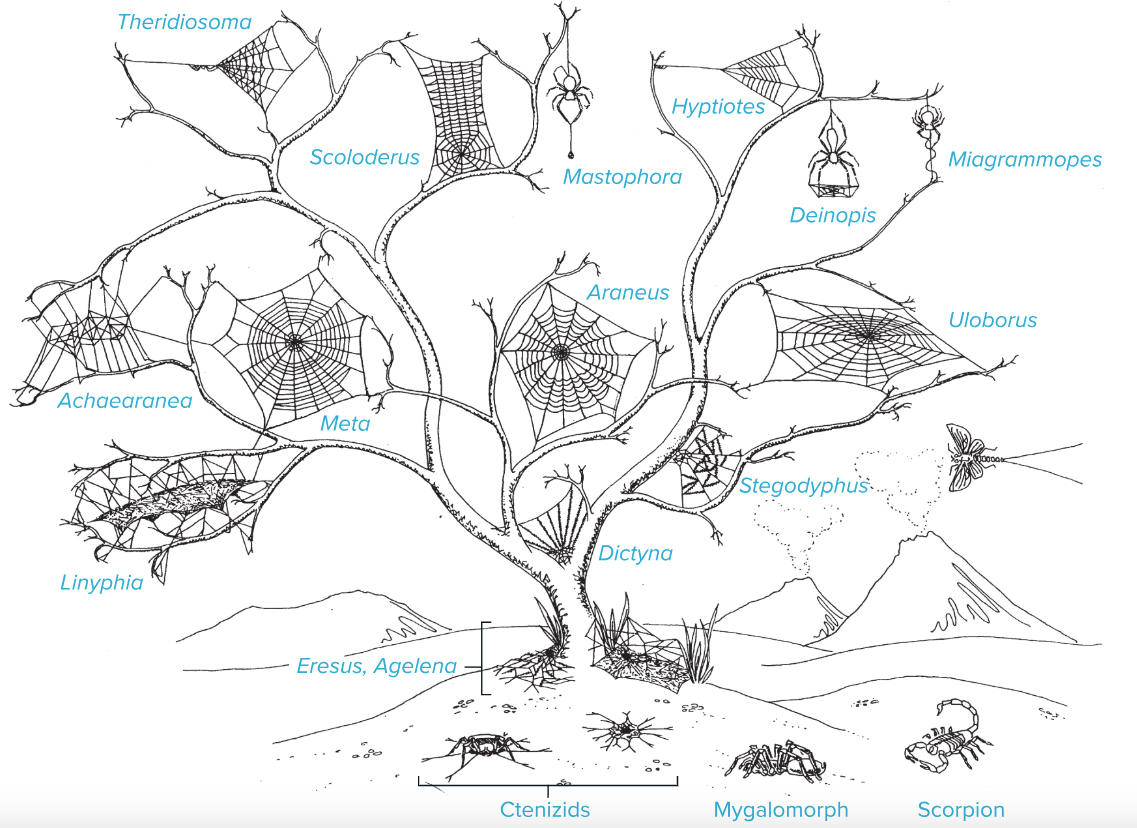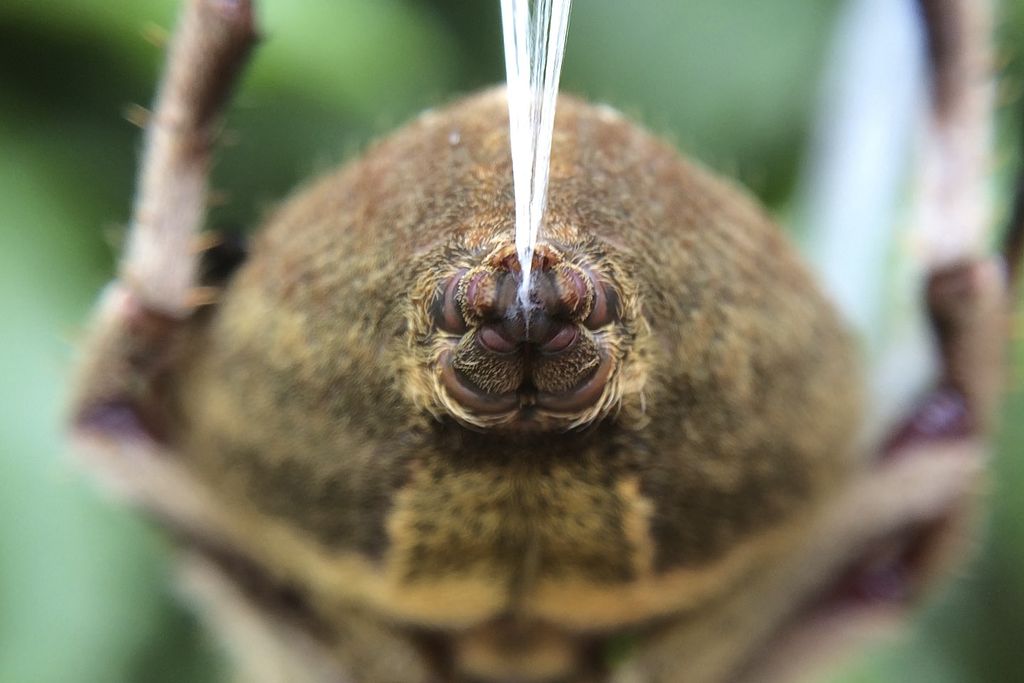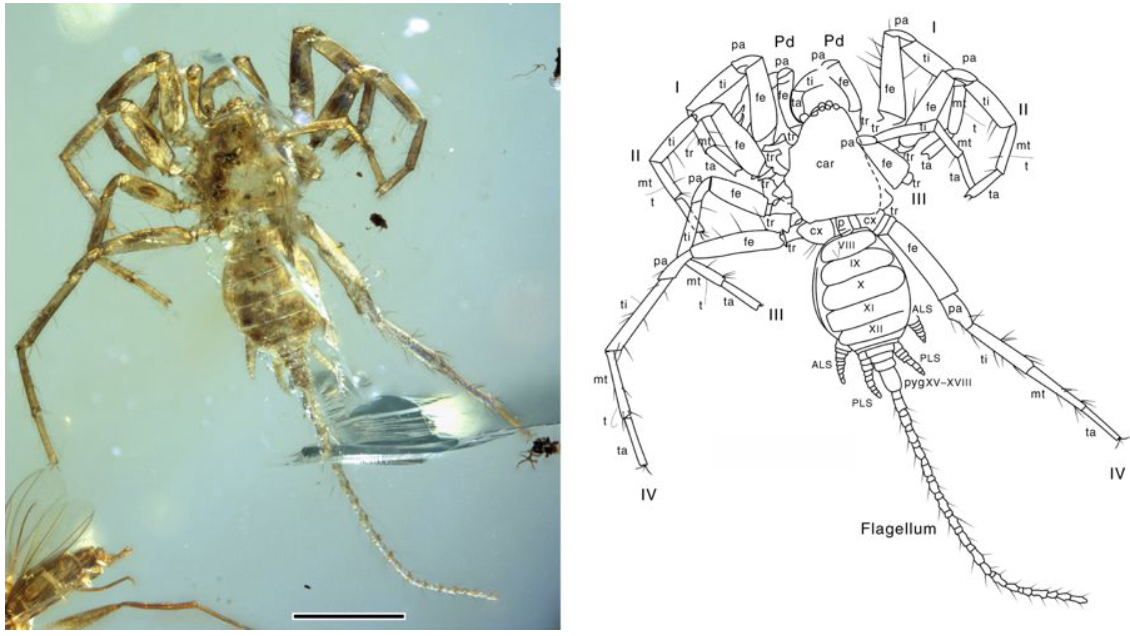Sticky Science: Evolution of Spiderwebs
Posted on Categories Discover Magazine

Orb weavers, from the grouping Orbiculariae, make the classic, wheel-shaped spiderweb, as well as other intriguing designs. This tree hosts a sampling of Orbiculariae, illustrating the web diversity. Evolutionarily older spiders and their ancestors appear on the ground and trunk; more recent arrivals hang from the highest branches. (Credit: F. Vollrath and P. Selden/AR Ecology, Evolution and Systematics 2007 (Modified from Vollrath 1988))
It may seem silly to fear a little spider — but the predator’s appearances in horror movies make more sense when you consider the precision, skill and creativity it employs to target its prey. Spiders’ venom-injecting fangs and the pointy claws tipping their segmented legs are menacing enough, but their innovative use of silk to ensnare victims may be the biggest reason to be grateful they are small.
“They’re absolute masters of using silk,” says Paul Selden, an arachnologist and paleontologist at the University of Kansas. Other creepy-crawlies make the stuff, too — silkworms use it to pupate in, some ants make nests from it — but, says Selden, “they don’t have the great variety of uses that spiders do.”
Spider silk is put to work in dozens of ways — to protect eggs, to create underwater homes and, most conspicuously, as hunting tools of stunning diversity. In the tree depicted above, scientists have sketched out a sampling of web designs of orb weavers and spiders that descended from them — just a subset of the spiders that use silk to hunt. The ground and trunk are occupied by ancestral relatives and some of the silk structures that preceded those suspended in the branches.

The spinneret of an Australian garden orb weaver spider (Eriophora transmarina) (Credit: Jason7825/Wikimedia Commons)
Orb weavers, sometimes classified along with their descendants into a grouping called Orbiculariae, comprise about a quarter of the more than 45,000 known spider species. Their webs typically feature the classic concentric circle and spoke-like strands that radiate from a hub. But some Orbiculariae members spin novelties. In the figure, a bolas spider (Mastophora) hangs from the tree’s highest point, prepared to swing her sticky sphere at moths drawn in by a pheromone lure. To the right, a net-casting spider (Deinopis) holds a silken trawl between her claws, ready to drop it when her quarry wanders underneath.
Scientists are still working to classify this diversity and understand how it got here, says Selden, who coauthored a review on spiderweb evolution in the Annual Review of Ecology, Evolution, and Systematics. This picture from the review hints at a general evolutionary progression as one moves up the tree, and highlights a pivotal event: As insects took to flight, spiders chased up after them, placing their snares higher in the air.
The webs continued to diversify as insects evolved ways to escape this clade of predators. Scoloderus’ ladder web, which sports an elongated, crosshatched netting above a typical, circular orb, is specialized to target moths, which would normally escape a sticky web by shedding protective scales. The ladder portion keeps the moth tumbling — and will trap it when the scales have all flaked off. The triangle spider (Hyptiotes) optimizes its attack by releasing the long-thread portion of its web when an insect hits the main, cone-shaped portion. As a result, the web collapses and envelops the target, like a camping tent that has suddenly lost its poles.
A bit of stickiness helps keep prey in place long enough for a spider to permanently subdue them. But not all webs get their stick the same way. Some webs snag insects with droplets of glue. Others are “wooly” — their silk is made of thin strands that cling to an insect’s hairs and legs, much like the threads of a sweater stick to a bur. In the illustration, spiders on the right main trunk of the tree weave wooly — or cribellate — webs. And weavers on the left use gluey, ecribellate silk.
This divergence in strand type has been a sticking point for scientists studying spider evolution, spinning out a long debate over how many times the orb web evolved. Though web strands may be very different, the building behaviors are remarkably similar, says Jason Bond, an arachnologist at the University of California, Davis. So it’s unclear whether orb weaving arose independently in cribellate and ecribellate weavers, or whether the web arose once and silk type diverged later on.
Clues about the evolution of web-building behavior have come in part from fossil evidence. Webs and other silken structures typically don’t fossilize well (though occasionally, scientists have found strands of silk and clumps of web preserved in amber), so researchers often rely on the connections they can make between present-day spider morphology and behavior to tell them something about spiders and proto-spiders of the past.

To understand the evolution of spiders and their relatives, scientists look closely at the anatomy of their fossilized ancestors and painstakingly identify the individual body parts. This ancient arachnid, frozen in amber roughly 100 million years ago, has the spinnerets characteristic of modern spiders, but also sports a whip-like tail. Such distinct features are key to pinpointing its placement in the spider family tree. (Wang et al./Nature Ecology and Evolution, 2018)
For example, today’s sheet web builders (such as the Agelena group pictured, and funnel-web spiders of the Ischnothele genus) lay blankets of webbing across grass and other vegetation and tend to exhibit unusually long spinnerets. Just this year, scientists noted similarly long spinnerets in the recently discovered fossilized remains of ancient arachnids. Thus, “at least one hypothesis would be that they built a type of sheet web,” says Bond. “Maybe sheet webs are the type of web that’s ancestral for all spiders.”
As well as studying how spiderwebs came about, researchers are also looking at how some spiders came to abandon them. Some newer species, such as certain ant-hunting specialists and the portia jumping spider (which will prey on fellow spiders by lowering itself from above), don’t use webs at all.
The mind-boggling diversity of spider strategies shouldn’t come as such a surprise when one considers that they have had hundreds of millions of years to evolve — researchers have found fossils of spiders that were scuttling around more than 150 million years before the dinosaurs.
“You’re talking about 50,000 species of things that are all nearly exclusively predatory,” says Bond. “Spiders have devised all sorts of ways of killing insects.”
10.1146/knowable-103018-2
This article originally appeared in Knowable Magazine, an independent journalistic endeavor from Annual Reviews. Sign up for the newsletter.
